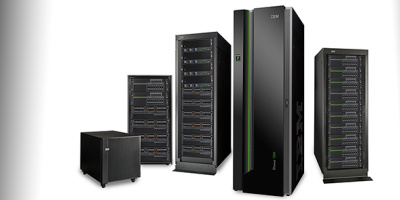For the non-gamers in the crowd, however, USB 2.0 may be good enough.
There is a distinct downside to being a cheapskate: one is always buying technology that is behind the power curve. Just once in my life, I'm going to go and buy a computer with the fastest processor available just for the sheer thrill of knowing what it feels like to have the best.
The experience might be a little heady, though, because, let's face it, we're not all "gamers." I look at some of those gaming machines with the water-cooled cases and the video cards with more memory than my work computer, and I wonder, what kind of a person spends that kind of money? Are they kids who save up all their money from summer jobs and spend it on a computer because their parents have their college tuition, room and board, BMW, and new clothes every season fully covered? There was a time when I sold a bunch of stock and bought a $5,000 PC because that's what it cost back in the early '80s. You didn't get much for your money back then either; I think mine had 1 MB of RAM and a 10 GB hard drive.
No, I'll never be a gamer, so maybe it's just a dream to think about having a state-of-the-art computer someday. I'm quite content, really, with the data transfer rates inherent in Universal Serial Bus (USB) 2.0, for instance. In fact, I've still got a bunch of parallel cables in my box of treasures that I know will come in handy someday, so I dare not toss them out.
Do I care that the USB 3.0 standard has been out for a year now? Well, of course, I care, because 2010 is when we're supposed to see manufacturers start building USB 3.0-compatible devices. I admit that when I'm moving data around I don't like to wait for it, and I get a little buzz when things happen quickly. USB 2.0's data transfer rate of about 320 Mbit/s has been likened to moving data through a straw by those impatient people who weren't around to experience USB 1.0's 12 Mbit/s. How do you spell relief? USB 2.0! The theoretical throughput of the latter standard released in April 2000 (some four years after USB 1.0) is 480 Mbit/s, which is 40 times faster than the USB 1.1 implementation. And it's served us well for the past nine years. There are those who say it's getting a bit long of tooth now, however, and we need something faster. These people, mind you, are video people! They want to move videos around from kiosks to their laptops for the purposes of entertainment. With a $12 trillion U.S national debt, who among us truly believes he has time to watch movies?
OK, granted, faster is always better when it comes to computing, and USB 3.0, with a theoretical speed of 4.8 Gbit/s and a raw throughput of 4 Gbit/s has a realistic expectation of achieving 3.2 Gbit/s or better after overhead. In other words, USB 3.0 will be five to 10 times faster than today's USB 2.0 connections. That's why they're calling USB 3.0 SuperSpeed USB.
USB was created by a group of companies of which IBM was one. The others included Compaq, DEC, Intel, Northern Telecom, and Microsoft. Intel created the host controller interface and open software stack. Microsoft produced a USB software stack for Windows and worked with Compaq and National Semiconductor to write the host controller specification.
The new 3.0 standard achieves greater speed through a number of means, the most obvious being the addition of a physical bus that is added in parallel to the existing USB 2.0 bus. Whereas USB 2.0 has four wires, including power, ground, and two for differential data, USB 3.0 adds four more wires for two more pairs of differential signals. This results in eight connections between the cable and connector. Instead of a polling signal method, USB 3.0 uses an asynchronous method with a bidirectional data interface versus the half-duplex approach for USB 2.0 that limits data flow to a single direction at a time. This bidirectional mode in 3.0 also is expected to result in improved interaction between the device and the host computer.
Another feature of USB 3.0 is that it provides 50 percent more power for unconfigured devices and makes 80 percent more power available for configured devices. With the former, there are only 100 mA available versus 150 mA with USB 3.0. For configured devices, the power available jumps from 500 mA to 900 mA. This will make charging things like cell phones possible from a USB port and also make the USB bus a source of power for devices that otherwise might have required more energy. Those external hard drives that today require two USB cables and are sometimes a little flaky should be able to be powered by one cable from a USB 3.0 port.
The timing for USB 3.0 is right for connecting to the new, faster solid-state drives that are being introduced. And yes, transferring large video files will be a lot faster, and you will likely be able to do so without using any form of data compression software.
USB 3.0 will be backward-compatible with USB 2.0, but speed will fall to the slower rate, where one of the three necessary components--port, cable, or peripheral--is 2.0 limited. Maximum cable length, now about 16 feet for USB 2.0, will be only about 9 feet for 3.0 when running at top speed. That length can be extended through the use of hubs, however.
Reportedly, about 2 billion USB devices are sold annually, and USB 3.0 may be slightly more expensive than today's USB 2.0 equipment, so unless a device needs the extra speed, it may not be worth it to outfit it with a 3.0 port. Consequently, USB 2.0 likely will be around for some time to come. And for those of us who admire the super fast but more expensive equipment from afar, hanging onto our USB 2.0 printers may be good enough for the time being.





















 More than ever, there is a demand for IT to deliver innovation. Your IBM i has been an essential part of your business operations for years. However, your organization may struggle to maintain the current system and implement new projects. The thousands of customers we've worked with and surveyed state that expectations regarding the digital footprint and vision of the company are not aligned with the current IT environment.
More than ever, there is a demand for IT to deliver innovation. Your IBM i has been an essential part of your business operations for years. However, your organization may struggle to maintain the current system and implement new projects. The thousands of customers we've worked with and surveyed state that expectations regarding the digital footprint and vision of the company are not aligned with the current IT environment. TRY the one package that solves all your document design and printing challenges on all your platforms. Produce bar code labels, electronic forms, ad hoc reports, and RFID tags – without programming! MarkMagic is the only document design and print solution that combines report writing, WYSIWYG label and forms design, and conditional printing in one integrated product. Make sure your data survives when catastrophe hits. Request your trial now! Request Now.
TRY the one package that solves all your document design and printing challenges on all your platforms. Produce bar code labels, electronic forms, ad hoc reports, and RFID tags – without programming! MarkMagic is the only document design and print solution that combines report writing, WYSIWYG label and forms design, and conditional printing in one integrated product. Make sure your data survives when catastrophe hits. Request your trial now! Request Now. Forms of ransomware has been around for over 30 years, and with more and more organizations suffering attacks each year, it continues to endure. What has made ransomware such a durable threat and what is the best way to combat it? In order to prevent ransomware, organizations must first understand how it works.
Forms of ransomware has been around for over 30 years, and with more and more organizations suffering attacks each year, it continues to endure. What has made ransomware such a durable threat and what is the best way to combat it? In order to prevent ransomware, organizations must first understand how it works. Disaster protection is vital to every business. Yet, it often consists of patched together procedures that are prone to error. From automatic backups to data encryption to media management, Robot automates the routine (yet often complex) tasks of iSeries backup and recovery, saving you time and money and making the process safer and more reliable. Automate your backups with the Robot Backup and Recovery Solution. Key features include:
Disaster protection is vital to every business. Yet, it often consists of patched together procedures that are prone to error. From automatic backups to data encryption to media management, Robot automates the routine (yet often complex) tasks of iSeries backup and recovery, saving you time and money and making the process safer and more reliable. Automate your backups with the Robot Backup and Recovery Solution. Key features include: Business users want new applications now. Market and regulatory pressures require faster application updates and delivery into production. Your IBM i developers may be approaching retirement, and you see no sure way to fill their positions with experienced developers. In addition, you may be caught between maintaining your existing applications and the uncertainty of moving to something new.
Business users want new applications now. Market and regulatory pressures require faster application updates and delivery into production. Your IBM i developers may be approaching retirement, and you see no sure way to fill their positions with experienced developers. In addition, you may be caught between maintaining your existing applications and the uncertainty of moving to something new. IT managers hoping to find new IBM i talent are discovering that the pool of experienced RPG programmers and operators or administrators with intimate knowledge of the operating system and the applications that run on it is small. This begs the question: How will you manage the platform that supports such a big part of your business? This guide offers strategies and software suggestions to help you plan IT staffing and resources and smooth the transition after your AS/400 talent retires. Read on to learn:
IT managers hoping to find new IBM i talent are discovering that the pool of experienced RPG programmers and operators or administrators with intimate knowledge of the operating system and the applications that run on it is small. This begs the question: How will you manage the platform that supports such a big part of your business? This guide offers strategies and software suggestions to help you plan IT staffing and resources and smooth the transition after your AS/400 talent retires. Read on to learn:
LATEST COMMENTS
MC Press Online